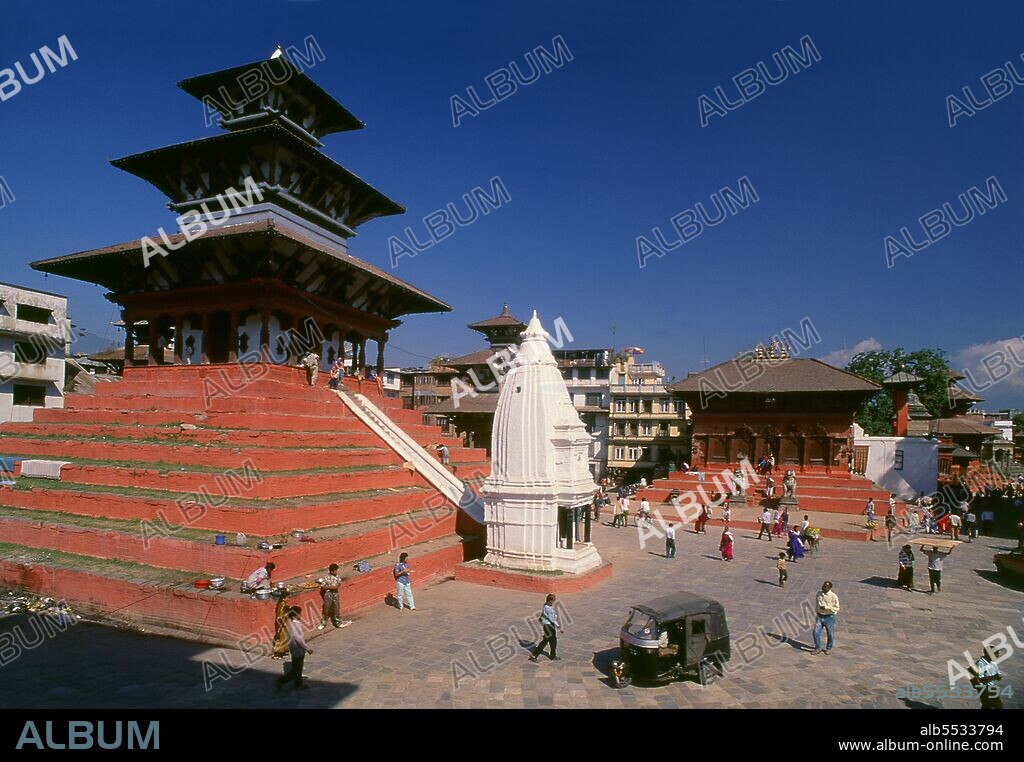alb5533794
Nepal: The Maju Dega Temple (left), Kamdev Temple (white building, centre) and the Shiva Parbati Temple (right), Durbar Square, Kathmandu

|
Add to another lightbox |
|
Add to another lightbox |



Title:
Nepal: The Maju Dega Temple (left), Kamdev Temple (white building, centre) and the Shiva Parbati Temple (right), Durbar Square, Kathmandu
Caption:
Encompassing a former royal palace, a wealth of temples and many other monuments, Durbar Square is Kathmandu’s historic and spiritual centre. The square, after years of neglect, was renovated in 1972-75 in the Hanuman Dhoka Project, initiated after the ascension to the throne of King Birendra. 'Durbar', or correctly darbar, means royal palace or royal court, but the locals prefer to call the square Hanuman Dhoka, 'Hanuman’s Gate', after the narrow palace gate which is guarded by a crimson-red figure of the monkey god Hanuman. The figure was set up in 1862 to protect the gate from ill luck and enemies of all sorts—or, as the Nepalese chronicles put it, from 'evil spirits, witches, and epidemics, such as smallpox'. Hanuman is worshipped mainly on account of his bravery and strength, and has often been adopted by Hindu soldiers as their patron deity. In times gone by, fortresses were guarded by images of Hanuman hewn into their walls, and the kings of Kathmandu and Bhaktapur displayed Hanuman figures on their banners.
Credit:
Album / Pictures From History/Universal Images Group
Releases:
Model: No - Property: No
Rights questions?
Rights questions?
Image size:
4965 x 3440 px | 48.9 MB
Print size:
42.0 x 29.1 cm | 16.6 x 11.5 in (300 dpi)
Keywords:
ARCHITECTURAL • ARCHITECTURE • ASIA IMAGES • ASIA PICTURES • ASIA • ASIAN IMAGE • ASIAN IMAGES • ASIAN PICTURES • ASIAN • CULT, HINDUISM • DURBAR SQUARE • DURBAR • HANUMAN DHOKA • HINDU • HINDUISM • HINDUS • HISTORIA UNIVERSAL • HISTORIA • HISTORICAL IMAGES • HISTORICAL PICTURES • HISTORICAL • HISTORY IMAGES • HISTORY PICTURES • HISTORY • KAMDEV • KATHMANDU VALLEY • KATHMANDU • MAJU DEGA • NEPAL • NEPALESE • RAINER KRACK • SHIVA PARVATI • TEMPERA • TEMPLE • TEMPLES • UNESCO WORLD HERITAGE SITE
 Pinterest
Pinterest Twitter
Twitter Facebook
Facebook Copy link
Copy link Email
Email

